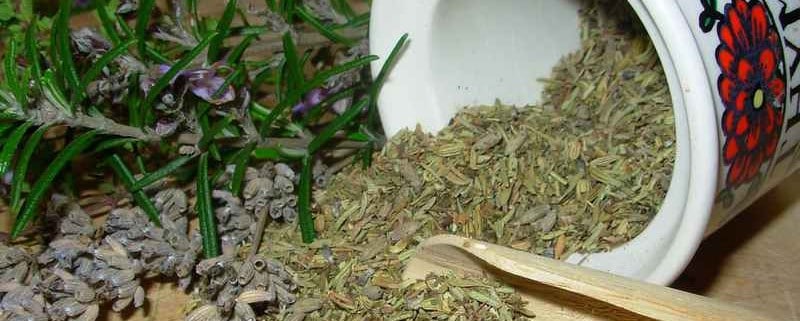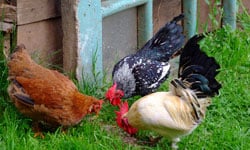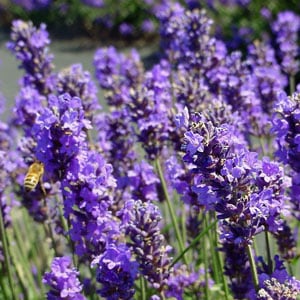Growing Herbs Indoors
Growing herbs indoors is one of the easiest ways to capture the flavors of summertime any time of year, but especially during the middle of the winter. Many of the culinary herbs used in cooking will happily grow on a windowsill or space next to a south facing window, bringing color, aroma and freshness to an often-dreary winter. With just a snip or two, you’ll have fresh aromatic flavors for your dishes.
Herbs have been helping us for thousands of years; from medicinal and cultural uses, to dyeing fabric, repelling insects, seasoning foods, making teas and scenting rooms while providing colorful decorations. We can put many of these same qualities to use in a small indoor herb garden.
They make excellent container plants, needing little attention past good light, healthy soil and minimal water. In getting started, it is best to plant one herb per pot to give them enough space without crowding. Smaller pots can be as small as four inches across, with six to eight inches being more ideal for longer lived plants.
There are very few things that indoor herbs need to thrive:
Good light
For the best growth and flavor, herbs need as much natural light as possible. Ideally, place them in or near a south facing window so they can get direct sunlight. If that isn’t possible, a south east or south west window with good strong indirect light should work. You’ll know if they need a bit more light as the plants will be smaller and a bit pale. If needed, a broad spectrum or “daylight” portable fluorescent light can be used.
Good drainage
Most common herbs used in the kitchen are Mediterranean in origin, so they won’t tolerate their roots being in standing water. Clay pots will drain quickly; but they are also porous and may dry out the soil in some climates, while glazed pottery or plastic pots will prevent this. A plate, saucer or other catch basin is important to prevent the water drainage from leaking out and damaging a counter top or windowsill.
Good soil
High quality potting soil can usually provide herbs with the nutrition needed throughout a winter growing season, but you might want to re-pot them with fresh soil in the summer or fall if you plan on keeping the herbs going longer.
Getting started couldn’t be easier! To begin, choose herbs for fresh ingredients or seasonings for what you like to cook. You might start with only two or three herbs or be adventurous and choose five or six. Remember, it is easier to start small and increase the number of herbs once you’ve got the hang of growing them inside.
If you are having a hard time choosing, it’s hard to go wrong with basil, oregano, thyme or sage. All of these are hardy and easy to grow, tolerating less than ideal conditions and a little occasional neglect. If you’ve not experienced fresh herbs, you’ll be surprised at how just a tiny bit of fresh herb will liven up an everyday, otherwise boring dish!
Let’s look at a few herbs in more detail which are ideally suited to an indoor kitchen environment!
Basil
 Few herbs are as easy to grow indoors or have as much to give to a kitchen’s atmosphere, aroma and flavors as the humble basil plant. Prolific, delicious and aromatic, a medium sized basil plant can brighten up a kitchen all by itself.
Few herbs are as easy to grow indoors or have as much to give to a kitchen’s atmosphere, aroma and flavors as the humble basil plant. Prolific, delicious and aromatic, a medium sized basil plant can brighten up a kitchen all by itself.
Start from seed and pick or clip leaves as needed for dishes, but don’t forget to use the flowers and seeds as seasonings when they appear. The flowers have a much more intense scent and flavor than the leaves, making them ideal for garnishes, soups and stews when added in the last few minutes of cooking. The seeds can be dried, saved and ground like black pepper giving a citrusy basil note to dishes.
There are several different varieties of basil to choose from – sweet and luscious Genovese, the traditional Italian pesto basil; bright citrusy lemon or lime basil; the very aptly named clove basil or the intense Thai basil.
Oregano
 This herb is hardy enough to be found in many European cottage gardens, almost completely ignored in cultivation and sometimes having grown in the same patch for a couple of decades.
This herb is hardy enough to be found in many European cottage gardens, almost completely ignored in cultivation and sometimes having grown in the same patch for a couple of decades.
Always sweetly aromatic and flavorful, one whiff or taste of fresh oregano will immediately make you wonder why you put up with the bland dried commercial stuff for so long.
Easy to start from seed, may take a bit of time to get established but will live for several seasons or longer with minimal needs. There are several varieties, but we’ve found the flavor and scent of the True Greek oregano strain to be the best – sweet and flavorful with a good pungency that doesn’t fall over into bitterness.
Thyme
 Another ancient herb, thyme is tough enough to be used as a ground cover that can be walked on and mowed! Thyme goes with almost all foods – meats, poultry, fish, stuffing, stews, vegetable dishes, cheese, eggs and rice. Just a little bit brightens up the food without taking over the flavor stage.
Another ancient herb, thyme is tough enough to be used as a ground cover that can be walked on and mowed! Thyme goes with almost all foods – meats, poultry, fish, stuffing, stews, vegetable dishes, cheese, eggs and rice. Just a little bit brightens up the food without taking over the flavor stage.
Thyme fits in really well in a kitchen setting because it is a naturally small plant and is very hardy and undemanding. Starting from seed is as easy as lightly pressing a few seeds into the damp soil and keeping it well watered until the seedlings appear. After that, keep the soil barely moist and enjoy!
Sage
 One of the classic foundational herbs in Thanksgiving stuffing, sage can do so much more for other dishes. It was values so highly by the Chinese that they would trade four pounds of Chinese tea for one pound of French sage, to be used for tea.
One of the classic foundational herbs in Thanksgiving stuffing, sage can do so much more for other dishes. It was values so highly by the Chinese that they would trade four pounds of Chinese tea for one pound of French sage, to be used for tea.
Sage is a small fragrant perennial shrub, making it well suited to the kitchen garden and windowsill. It is more commonly used dried today, but once again, the first whiff and taste of fresh sage will leave you cold on the common dried offerings.
Traditionally used to balance and moderate the fats and heavy flavors of rich, meaty foods, sage also works wonders in adding strength and depth to the sometimes bland flavors of a winter vegetarian dish.
Toasted or pan-fried sage leaves are an appetizer all of themselves, topping aged cheese slices or crushed on roasted winter squash soup.
Garlic Chives
 These mildly garlic-flavored chives are perennial and grow happily in all but the coldest climates, making them a perfect fit for the kitchen. Looking much like a stand of grass, just one or two stalks will give a lighter dish interest and a few will liven up soups or stews in winter.
These mildly garlic-flavored chives are perennial and grow happily in all but the coldest climates, making them a perfect fit for the kitchen. Looking much like a stand of grass, just one or two stalks will give a lighter dish interest and a few will liven up soups or stews in winter.
To keep the chives producing, snip the stems down at the base.
If you can’t decide on which herbs to start with, or want some for the kitchen and a larger selection for the outdoor herb garden, our Kitchen Herb Collection could help. Containing eight herbs – most of which will do well in the kitchen – along with a short 32 page guide to get you started, this will give you plenty of seed to start indoors and have a great herb garden in the spring.







Leave a Reply
Want to join the discussion?Feel free to contribute!